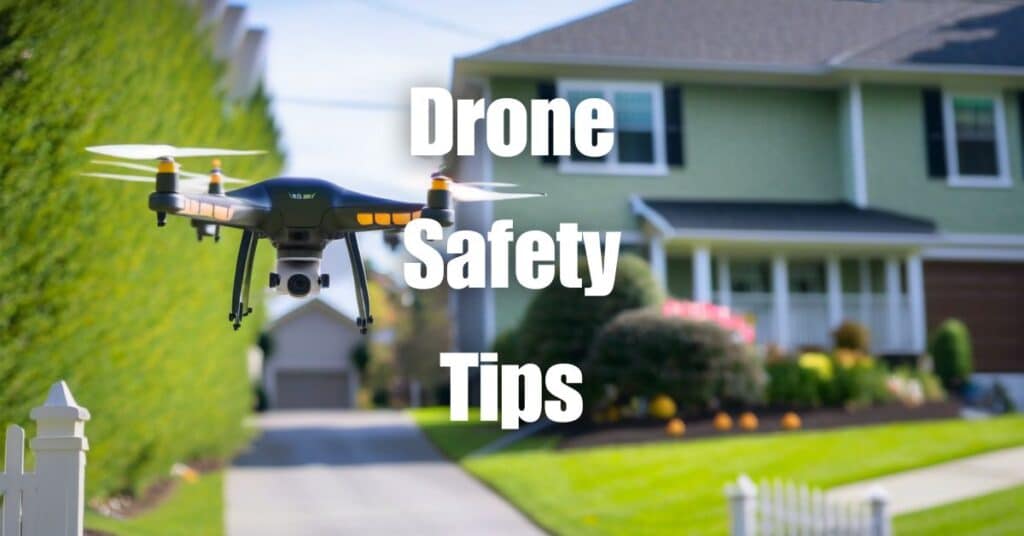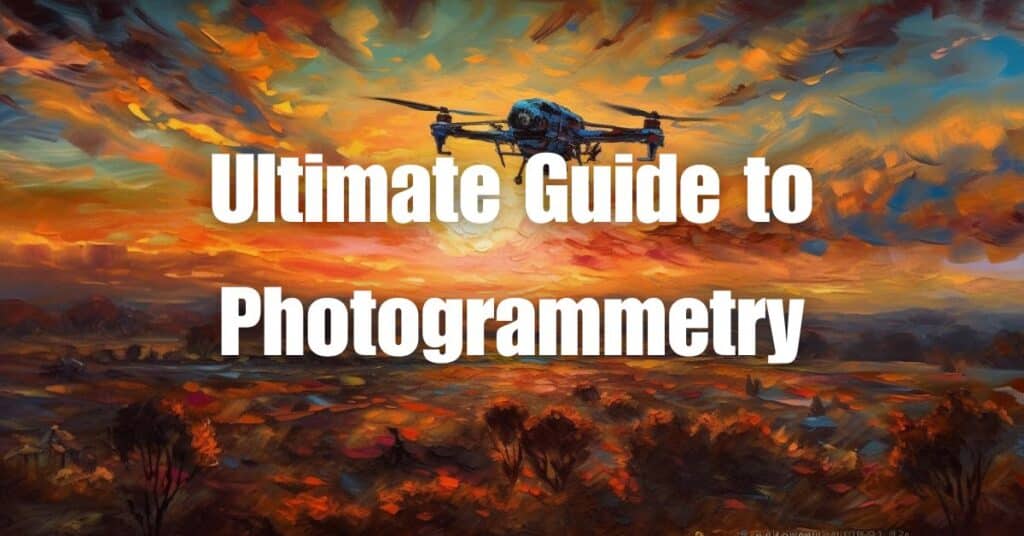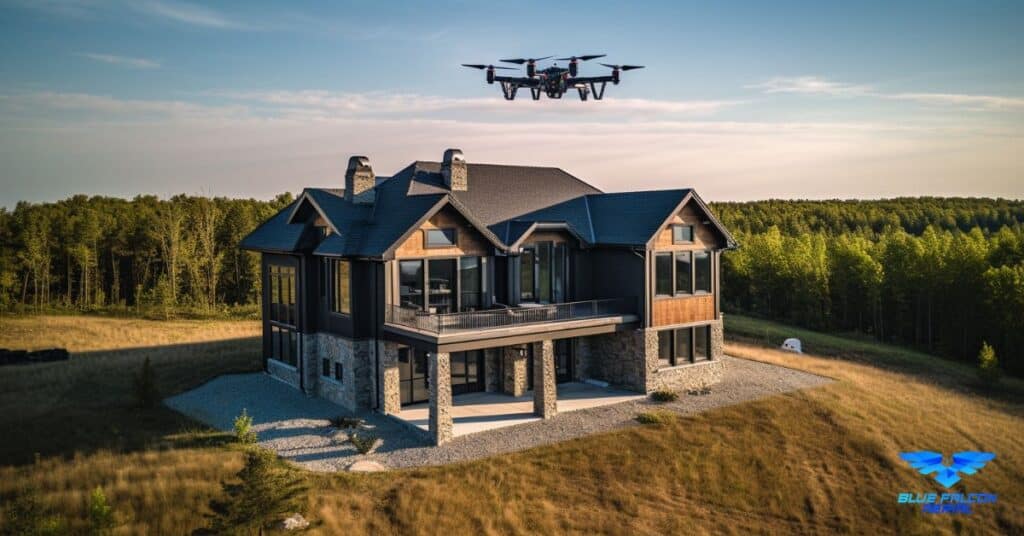Drones have become increasingly popular for both recreational and professional use. However, flying these fascinating machines comes with its own set of risks and responsibilities. Ensuring drone safety is essential to protect not only yourself but also the people and property around you. In this article, we will discuss essential tips for flying drones safely, covering everything from understanding regulations to maintaining your drone.
Basic Safety Guidelines for Operating a Drone
Drones can be both exciting and useful tools, but it’s important to follow some basic safety guidelines to ensure a secure and enjoyable flight experience. Here are some key aspects to keep in mind:
General Safety Tips
- Always read and understand the drone’s user manual before flying.
- Familiarize yourself with the drone’s controls and features.
- Keep a safe distance from people, animals, and property.
- Never fly under the influence of alcohol or drugs.
- Be aware of your surroundings, and avoid flying in restricted areas.
Drone Safety Checklist for Every Flight
Before each flight, perform a pre-flight check to ensure your drone is in good working order and ready for a safe flight. This checklist should include:
- Inspecting the drone for any visible damage or wear.
- Checking that the propellers are properly installed and secure.
- Ensuring the drone’s battery is fully charged and properly connected.
- Verifying that the remote controller’s battery is charged.
- Testing the drone’s GPS signal and compass calibration.
- Double-checking that any firmware updates have been installed.
By following these basic safety guidelines, you can minimize risks and ensure a safe and enjoyable flying experience.
Licensing and Registration
Before you take to the skies, it’s essential to understand the licensing and registration requirements for drone pilots.
When a License Is Required
In the United States, the Federal Aviation Administration (FAA) requires drone pilots to obtain a remote pilot certificate if they are operating drones for commercial purposes or if their drone weighs over 55 pounds. To obtain this certification, you must:
- Be at least 16 years old
- Pass an aeronautical knowledge test at an FAA-approved testing center
- Complete the FAA’s online application (known as the Integrated Airman Certification and Rating Application or IACRA)
Recreational drone pilots do not need a remote pilot certificate, but they must still follow FAA guidelines and safety rules.
Drone Registration Process
Regardless of whether you need a remote pilot certificate, all drones weighing between 0.55 pounds (250 grams) and 55 pounds (25 kilograms) must be registered with the FAA. The registration process is simple:
- Visit the FAA DroneZone website (https://faadronezone.faa.gov/).
- Create an account and provide the necessary information.
- Pay the registration fee ($5 at the time of writing).
- Mark your drone with the provided registration number.
By understanding and complying with licensing and registration requirements, you can ensure that you are operating your drone legally and responsibly.
Legal Altitude and Flight Restrictions
When flying your drone, it’s essential to be aware of the legal altitude limits and flight restrictions to ensure safe and responsible operation.
Maximum Legal Altitude
In the United States, the FAA limits the maximum altitude for drone flights to 400 feet above ground level (AGL). This rule applies to both recreational and commercial drone pilots. Flying above this altitude can pose a risk to manned aircraft and may result in penalties or fines.
Restrictions Near Airports and Sensitive Areas
There are several restrictions in place to ensure safe drone operation near airports, military bases, and other sensitive areas. These include:
- No-fly zones: The FAA prohibits drone flights within a 5-mile radius of airports without prior authorization. You can use tools like the B4UFLY app to identify no-fly zones in your area.
- Temporary flight restrictions (TFRs): These are issued for specific events, such as wildfires, natural disasters, or VIP movements, and may restrict drone flights in certain areas.
- National parks and wildlife refuges: Drone flights are generally prohibited in these areas to protect wildlife and preserve the natural environment.
Always check for local regulations and restrictions before flying your drone to ensure compliance and avoid potential penalties.
Flying Safely Near People and Crowded Areas
Operating a drone near people or in crowded areas requires extra precautions to ensure public safety and minimize potential risks.
Safety Precautions
When flying your drone near people or in crowded spaces, follow these safety guidelines:
- Maintain a safe distance: Keep your drone at least 25 feet away from individuals not involved in your drone operation.
- Avoid flying directly over people: This minimizes the risk of injury in case of a malfunction or loss of control.
- Be prepared for emergencies: Know how to respond in case of a malfunction, such as performing an emergency landing or shutting down the motors.
Ensuring Public Safety While Operating Drones
To maintain public safety while flying your drone, always:
- Respect people’s privacy: Avoid capturing images or videos of people without their consent.
- Be aware of local regulations: Some cities or municipalities may have specific rules regarding drone flights near people or in crowded areas.
- Communicate with bystanders: Inform people in the area about your drone operation, and be responsive to any concerns they may have.
By following these guidelines and taking additional precautions, you can safely operate your drone near people and crowded areas while minimizing risks and respecting others’ rights.
Recreational Drone Pilot Rules
Recreational drone pilots have a unique set of rules and guidelines to follow, ensuring safe and responsible operation while enjoying their hobby.
Specific Rules for Recreational Pilots
As a recreational drone pilot, it’s essential to follow these FAA guidelines:
- Fly your drone at or below 400 feet above ground level (AGL).
- Keep your drone within visual line of sight.
- Do not fly in controlled airspace (near airports) without FAA authorization.
- Avoid flying near other aircraft, and always give way to manned aircraft.
- Do not fly over groups of people, public events, or stadiums full of people.
- Avoid flying near emergency response efforts, such as fires or natural disasters.
Reducing Risks: Importance of Drone Safety Training
Even though recreational drone pilots are not required to obtain a remote pilot certificate, taking the time to learn about drone safety is highly recommended. This can be done through:
- Online resources: Many websites and forums offer tips and advice on safe drone operation.
- Drone safety courses: Some organizations provide courses specifically designed for recreational pilots, covering essential safety topics and best practices.
- Flight simulators: Practice your flying skills in a virtual environment before taking your drone to the skies.
By familiarizing yourself with safety guidelines and honing your skills, you can reduce risks and enjoy your drone hobby responsibly.
Risks of Flying in Bad Weather Conditions
Operating a drone in adverse weather conditions can be dangerous and may result in accidents or damage to your equipment. Understanding the risks and following weather guidelines is crucial for safe drone operation.
Potential Hazards
Some of the hazards associated with flying in bad weather conditions include:
- Poor visibility: Fog, rain, or snow can reduce visibility, making it difficult to see your drone and maintain visual line of sight.
- Wind gusts: Strong winds can cause your drone to lose control or fly unpredictably.
- Moisture damage: Rain or snow can cause damage to your drone’s electrical components, leading to malfunctions or permanent damage.
- Lightning: Flying during thunderstorms increases the risk of your drone being struck by lightning, which can result in catastrophic failure.
Weather Guidelines for Safe Drone Operation
To ensure the safety of your drone and those around you, follow these weather guidelines:
- Check the weather forecast: Before flying, check the weather forecast to identify any potential hazards, such as strong winds or precipitation.
- Monitor local conditions: Keep an eye on changing weather conditions during your flight, and be prepared to land your drone if necessary.
- Avoid flying in extreme conditions: Do not fly your drone during thunderstorms, heavy rain, or strong winds.
- Invest in weather-resistant equipment: Some drones are designed to be more resilient to adverse weather conditions, providing an extra layer of protection.
By understanding the risks associated with flying in bad weather conditions and following these guidelines, you can minimize hazards and ensure safe drone operation.
Privacy and Security Considerations
While operating a drone, it’s essential to consider the privacy and security of others. By following best practices and being mindful of your surroundings, you can ensure a responsible and respectful flying experience.
Respecting Others’ Privacy
When flying your drone, always be considerate of people’s privacy. Follow these guidelines to avoid infringing on their rights:
- Do not fly over private property without permission from the owner.
- Avoid capturing images or videos of people without their consent.
- Be mindful of noise pollution, as drones can be disruptive to others.
- Follow local privacy laws and regulations, which may vary depending on your location.
Security Measures to Follow
To ensure the security of your drone and the safety of others, adhere to these security practices:
- Update your drone’s firmware regularly to fix any security vulnerabilities.
- Use strong, unique passwords for your drone and associated accounts.
- Enable any available security features, such as geofencing, to prevent unauthorized access or use.
- Be cautious when sharing your drone’s location or flight data online, as this information could be exploited by malicious actors.
By respecting the privacy and security of others while flying your drone, you can promote a positive and responsible drone culture.
Night-time Drone Operation
Operating a drone at night can present unique challenges and safety concerns. Understanding the legal requirements and following safety tips can help ensure a successful and secure night-time flight.
Legal Requirements
In the United States, the FAA allows night-time drone flights for both recreational and commercial pilots, provided they follow specific guidelines:
- Recreational pilots must fly within visual line of sight and follow any applicable local regulations.
- Commercial pilots must obtain a Part 107 waiver that permits night-time operation and follow the conditions outlined in the waiver.
Safety Tips for Flying Drones at Night
To ensure a safe and enjoyable night-time flying experience, follow these safety tips:
- Use anti-collision lights: Equip your drone with visible and FAA-compliant anti-collision lights to increase visibility and avoid potential accidents.
- Maintain visual line of sight: Even though visibility may be reduced at night, always keep your drone within your line of sight.
- Choose an appropriate location: Select a well-lit, open area free of obstacles for your night-time flight.
- Conduct a pre-flight check: Before flying at night, perform a thorough pre-flight check to ensure your drone is in good working condition and properly equipped for night-time operation.
- Be cautious of wildlife: Be aware that nocturnal animals may be active during night-time flights, and take precautions to avoid disturbing them.
By understanding the legal requirements and following these safety tips, you can safely operate your drone at night and enjoy a unique and exhilarating flying experience.
Handling Lost or Crashed Drones
Accidents can happen, and your drone might get lost or crash during a flight. Knowing how to handle such situations can minimize damage and help you recover your drone.
What to Do If Your Drone Gets Lost
If you lose control of your drone or cannot locate it, follow these steps:
- Remain calm and assess the situation. Try to recall the last known location of your drone and any potential obstacles in the area.
- Use the drone’s “Find My Drone” or “Return to Home” feature, if available, to help locate and recover your drone.
- If your drone is equipped with GPS, use its last known coordinates to search for it.
- Enlist the help of friends or family to search the area and ask bystanders if they have seen your drone.
- If you cannot locate your drone, report the lost drone to the FAA and local authorities, as required by law.
What to Do If Your Drone Crashes
In the event of a crash, take these steps to minimize damage and ensure safety:
- Assess the situation and ensure the safety of yourself and others. Do not approach the crash site if there is a risk of injury or further damage.
- Carefully retrieve your drone and assess the damage. Look for any broken or damaged components, such as propellers or the camera.
- Document the incident, including details about the location, weather conditions, and potential causes of the crash.
- Contact your drone manufacturer or insurer, if applicable, to report the incident and inquire about repair options.
- Learn from the experience and take measures to prevent future crashes, such as improving your flying skills or upgrading your equipment.
By knowing how to handle lost or crashed drones, you can minimize damage, recover your drone, and prevent future accidents.
Drone Safety Tips
Following drone safety tips can help ensure a secure and enjoyable flying experience. Here are some essential safety practices to keep in mind:
- Always perform a pre-flight check to ensure your drone is in good working order.
- Familiarize yourself with your drone’s controls and features before flying.
- Keep your drone within visual line of sight and maintain situational awareness.
- Follow FAA regulations and local laws governing drone operation.
- Be aware of weather conditions and avoid flying in adverse conditions.
- Fly in open, unobstructed areas away from people, animals, and property.
- Invest in safety gear and accessories, such as propeller guards and anti-collision lights.
- Practice your flying skills regularly to improve your ability to handle emergencies.
- Consider taking a drone safety course or obtaining certification to increase your knowledge and skill level.
- Maintain your drone regularly to ensure optimal performance and safety.
By following these drone safety tips, you can minimize risks, protect yourself and others, and enjoy a safe and rewarding flying experience.
FAA Regulations and Guidelines
Understanding and adhering to FAA regulations and guidelines is crucial for drone pilots, ensuring safe and legal operation in the United States.
Regulations for Drone Pilots
The FAA has established a set of regulations governing drone operation, which vary depending on whether you’re flying for recreational or commercial purposes. Key regulations include:
- Registering your drone with the FAA if it weighs between 0.55 and 55 pounds.
- Following airspace restrictions and obtaining necessary authorizations for controlled airspace.
- Adhering to altitude limits, generally 400 feet above ground level (AGL) for recreational pilots.
- Maintaining visual line of sight with your drone at all times.
- Yielding the right of way to manned aircraft.
- Avoiding flights over people, moving vehicles, and sensitive infrastructure.
Safe Drone Flying Practices
In addition to following FAA regulations, it’s essential to adopt safe drone flying practices, such as:
- Conducting pre-flight checks to ensure your drone is in good working order.
- Familiarizing yourself with your drone’s controls and features.
- Staying updated on changes to FAA regulations and guidelines.
- Taking drone safety courses to improve your knowledge and skills.
- Investing in safety gear and accessories to enhance your drone’s safety features.
By adhering to FAA regulations and practicing safe flying techniques, you can ensure a responsible and enjoyable drone operation.
Drone Maintenance and Safety
Regular maintenance and proper use of safety gear can help extend the lifespan of your drone and prevent accidents.
Regular Maintenance Practices
To keep your drone in optimal condition, follow these maintenance practices:
- Inspect and clean your drone after each flight, checking for damage, dirt, or debris.
- Replace damaged or worn-out propellers to ensure stable and safe flights.
- Keep your drone’s firmware and software up to date to benefit from the latest features and bug fixes.
- Calibrate your drone’s sensors, such as GPS and IMU, to maintain accurate positioning and stability.
- Regularly inspect and replace batteries, ensuring they are properly charged and stored.
Drone Safety Gear and Accessories
Investing in safety gear and accessories can enhance your drone’s safety features and reduce the risk of accidents. Some useful items include:
- Propeller guards: These can help prevent injuries or damage caused by accidental contact with spinning propellers.
- Anti-collision lights: Visible and FAA-compliant lights can help increase your drone’s visibility, particularly during night-time flights or in low-light conditions.
- Landing pads: A portable and stable surface for takeoff and landing can help prevent damage from rough terrain or debris.
- Carrying cases: Protect your drone during transport and storage with a durable and padded case designed specifically for your model.
By maintaining your drone regularly and using appropriate safety gear, you can enhance its performance, reduce the risk of accidents, and prolong its lifespan.
Safety Courses and Certifications
Drone safety training is essential for both recreational and commercial pilots to develop their skills, increase their knowledge, and reduce the risk of accidents.
Importance of Drone Safety Training
Drone safety training offers several benefits, including:
- Improving your flying skills and confidence.
- Keeping up to date with the latest regulations and best practices.
- Reducing the risk of accidents and enhancing safety for yourself and others.
- Potentially lowering insurance premiums and increasing credibility as a commercial drone operator.
Recommended Courses and Certifications
Several organizations offer drone safety courses and certifications, catering to different skill levels and purposes. Some recommended options include:
- FAA Part 107 Certification: A must-have for commercial drone pilots in the United States, this certification demonstrates your knowledge of FAA regulations and safe drone operation.
- UAS Safety Certification by the Association for Unmanned Vehicle Systems International (AUVSI): This program offers three levels of certification, covering safety, advanced operations, and instructor qualifications.
- Drone Pilot Ground School: This online course helps prepare you for the FAA Part 107 exam and covers essential topics such as airspace, weather, and emergency procedures.
- Drone U: Offering a wide range of courses, Drone U covers topics such as flight proficiency, mapping, and thermography, tailored for different skill levels and industries.
By investing in drone safety training and obtaining relevant certifications, you can enhance your skills, promote safe drone operation, and stand out as a responsible drone pilot.
Commercial Drone Operator Guidelines
Commercial drone operators face unique challenges and responsibilities, making it essential to follow safety guidelines and adopt best practices to ensure successful operations.
Safety Guidelines for Commercial Operators
As a commercial drone operator, adhere to these safety guidelines:
- Obtain the necessary FAA Part 107 certification and any required waivers for your specific operations.
- Develop standard operating procedures (SOPs) for your business, covering pre-flight checks, emergency procedures, and post-flight processes.
- Train your staff and ensure they are knowledgeable about FAA regulations, company SOPs, and safe drone operation.
- Implement a robust maintenance program to keep your fleet of drones in optimal condition.
- Carry appropriate insurance coverage to protect your business and clients in case of accidents or damages.
Best Practices for Drone Risk Assessment
Conducting drone risk assessments is crucial for commercial operators to identify potential hazards and mitigate risks. Follow these best practices:
- Identify hazards: Assess the flight environment for potential hazards, such as obstacles, weather conditions, and nearby air traffic.
- Evaluate risks: Determine the likelihood and severity of each hazard and prioritize your efforts based on the level of risk.
- Implement risk mitigation measures: Develop strategies to minimize risks, such as selecting alternative flight paths, using safety gear, or rescheduling flights during adverse weather.
- Monitor and review: Regularly review your risk assessments and update them as needed to account for new information, changes in regulations, or improvements in technology.
By adhering to safety guidelines and conducting thorough risk assessments, commercial drone operators can ensure successful and responsible operations while protecting their business and clients.
Emergency Handling
Emergencies can arise during drone operations, and knowing how to handle them is crucial for ensuring safety and minimizing damage.
How to Handle Emergencies While Operating a Drone
In case of an emergency, follow these steps:
- Stay calm: Panicking may lead to rash decisions, so remain focused and assess the situation.
- Determine the issue: Identify the problem, such as a sudden loss of control, low battery, or unresponsive controls.
- Use emergency features: If available, activate your drone’s emergency features, such as “Return to Home” or “Auto-Land.”
- Regain control: Try to regain control of your drone, making any necessary adjustments to avoid obstacles or hazards.
- Land safely: If possible, land your drone safely and away from people, animals, or property.
- Learn from the experience: Analyze the situation, identify the cause of the emergency, and take steps to prevent similar issues in the future.
Safe Drone Flying Techniques for Beginners
As a beginner, adopt these safe drone flying techniques to minimize the risk of emergencies:
- Start with a beginner-friendly drone that offers features such as altitude hold, GPS, and obstacle avoidance.
- Practice flying in open, unobstructed areas to build confidence and skills.
- Learn about your drone’s controls, features, and safety systems.
- Conduct pre-flight checks and maintain your drone regularly.
- Follow FAA regulations and local laws governing drone operation.
By learning how to handle emergencies and practicing safe flying techniques, beginners can mitigate risks and enjoy a more rewarding drone flying experience.
Blue Falcon Aerial for Orthomosaic and LiDAR Projects
If you require professional assistance for orthomosaic or LiDAR projects, consider Blue Falcon Aerial, a company specializing in drone services. Whether you are a recreational drone pilot or a commercial operator, understanding the importance of drone safety can lead to a need for professional services.
Blue Falcon Aerial offers deliverables that include high-quality orthomosaic maps, topographic maps, 3D models, and LiDAR point clouds. Their team of experts can help ensure the success of your project while maintaining strict safety standards.
Conclusion
Drone safety is crucial for ensuring enjoyable and responsible drone operation. By following essential guidelines, FAA regulations, and best practices, you can minimize risks and protect yourself, others, and your equipment. Don’t forget to check out Blue Falcon Aerial’s comprehensive guide on building and growing your drone business. For all your drone service needs, contact Blue Falcon Aerial and let their experienced team help you achieve your project goals while prioritizing safety.




